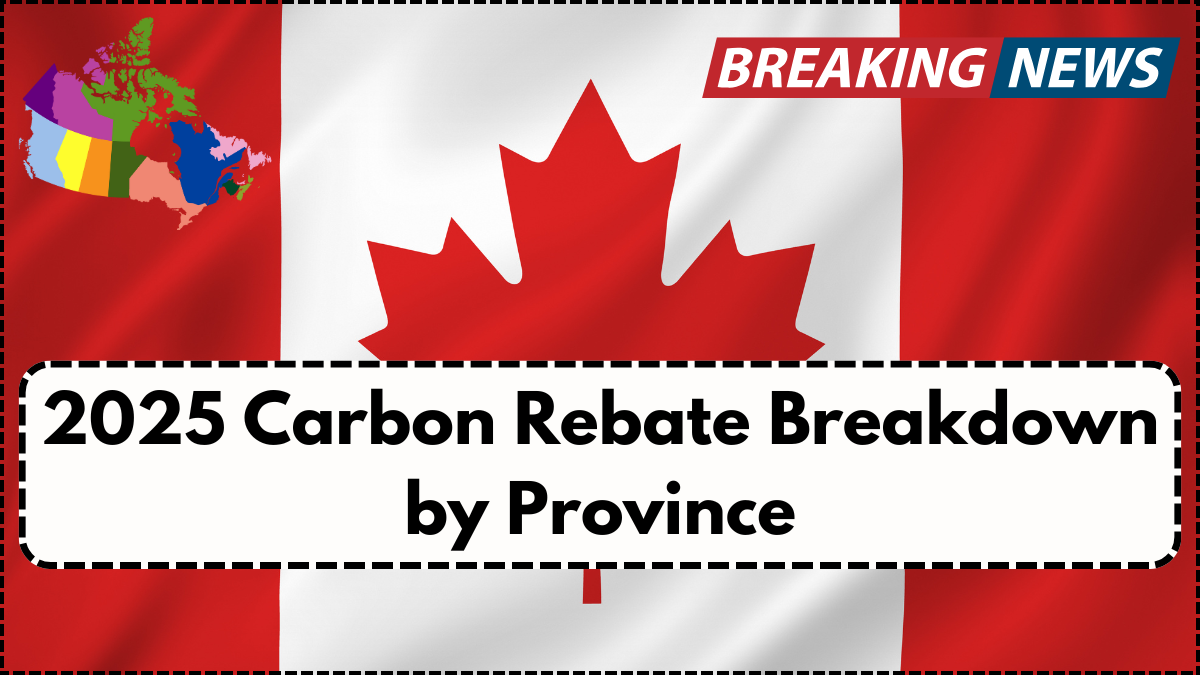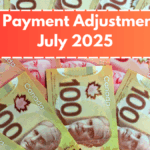Canadians across multiple provinces are receiving updated quarterly carbon rebate payments—officially known as the Climate Action Incentive Payment (CAIP). These rebates are intended to help households offset the cost of the federal carbon pricing system. However, the carbon rebate amount by province varies significantly based on location, household size, and fuel usage.
If you’re wondering how much you’ll receive this year and how it compares across Canada, this breakdown provides clear, up-to-date insights. Each province’s rebate is adjusted for inflation and regional carbon pricing rates. Below is a detailed look at who qualifies and how much you can expect this summer.

June 2025 Climate Action Incentive Payment Breakdown
The table below outlines the carbon rebate amount by province for a single adult in June 2025. Additional amounts are added per child or additional adult in the household.
| Province | Base Amount (Single Adult) | Additional Adult | Per Child | Rural Supplement | Delivery Method |
|---|---|---|---|---|---|
| Alberta | $225 | $112.50 | $56.25 | 10% | Direct Deposit |
| Saskatchewan | $195 | $97.50 | $48.75 | 10% | Direct Deposit |
| Manitoba | $170 | $85.00 | $42.50 | 10% | Direct Deposit |
| Ontario | $140 | $70.00 | $35.00 | 10% | Direct Deposit |
| New Brunswick | $110 | $55.00 | $27.50 | 10% | Direct Deposit |
| Nova Scotia | $105 | $52.50 | $26.25 | 10% | Direct Deposit |
| Prince Edward Is. | $95 | $47.50 | $23.75 | 10% | Direct Deposit |
| Newfoundland | $100 | $50.00 | $25.00 | 10% | Direct Deposit |
Key Changes to the 2025 CAIP Structure
The 2025 version of the Climate Action Incentive has undergone several changes. Previously delivered annually as a tax return credit, it’s now issued quarterly to make the benefit more accessible and timely. All eligible recipients get their payments through the CRA via direct deposit or mailed cheque, similar to how the GST HST rebate is distributed.
Another notable update: a rural supplement of 10% is automatically applied to residents living outside of large metropolitan areas, recognizing their higher transportation and heating costs.
Who Is Eligible for the Carbon Rebate in June 2025?
Eligibility hinges on residency and tax filing status. You must have:
- Filed your 2024 tax return by the spring of 2025
- Resided in a province where the federal fuel charge applies
- Been 19 years or older (or met one of the CRA’s exceptions)
There’s no need to apply separately—if you qualify, the rebate is automatic. However, payment amounts are tied to your household composition, so accurate tax reporting is crucial.
How the Rebate Compares to the GST HST Rebate
While both the CAIP and the GST HST rebate are distributed by the CRA, they serve different purposes. The carbon rebate offsets climate-related costs, whereas the GST HST rebate is meant to ease the burden of sales taxes for lower-income Canadians. However, both are income-tested and scaled by family size, which often causes confusion. Make sure to review both when budgeting your quarterly finances.
Impact of Carbon Pricing and Rebate System
Canada’s federal carbon pricing system is designed to incentivize lower greenhouse gas emissions. The CAIP ensures that while the carbon price increases the cost of certain fuels, families receive financial support in return. The goal is behavioral change without financial harm. Reinvesting in energy-efficient appliances and transportation is a long-term benefit tied to this rebate system.
Conclusion
The carbon rebate amount by province in June 2025 reflects Ottawa’s attempt to make climate action equitable. By redistributing funds through the Climate Action Incentive and offering supplements for rural residents, the government aims to soften the impact of carbon pricing while maintaining its environmental objectives. Staying informed ensures you receive what you’re owed and helps you plan effectively.
FAQs
What is the carbon rebate amount for a family of four in Alberta?
A family of four (two adults, two children) in Alberta would receive $225 (primary adult) + $112.50 (spouse) + $56.25 x 2 (children) = $450, plus a 10% rural supplement if applicable.
How do I know if I qualify for the climate action incentive?
You qualify if you filed your 2024 taxes and lived in a rebate-eligible province. Payments are automatic through the CRA, similar to the GST/HST credit.
Is the carbon rebate taxable income?
No, the carbon rebate is not considered taxable income and does not affect your other benefits.
When is the next CAIP payment scheduled?
The next CAIP payment is expected in October 2025. Payments occur quarterly: January, April, July, and October.
What if I didn’t receive my rebate in June 2025?
If you’re eligible and didn’t receive payment, check your CRA My Account or contact their support. Issues can arise from outdated direct deposit info or incomplete tax filings.
For More Information Click Here



